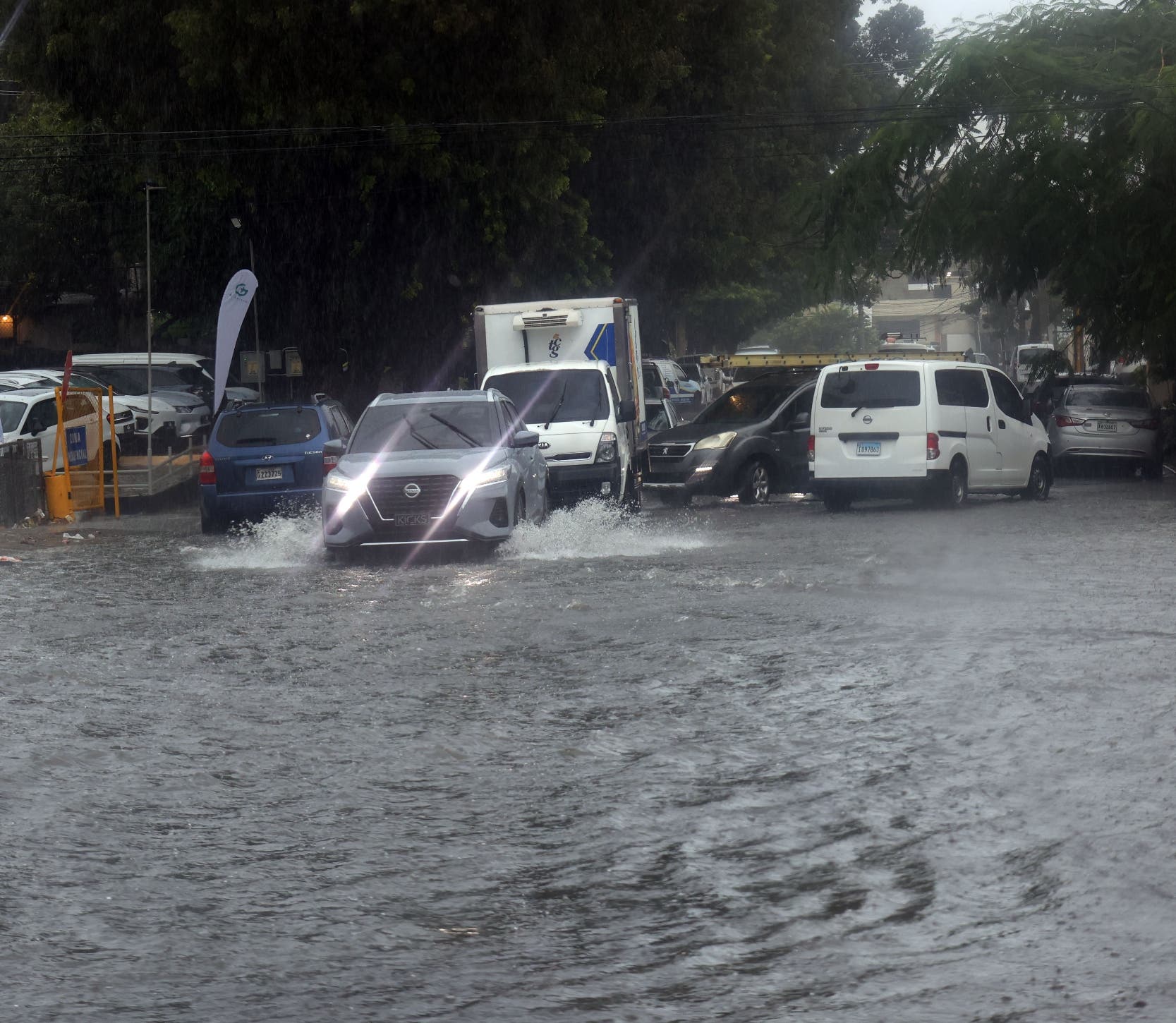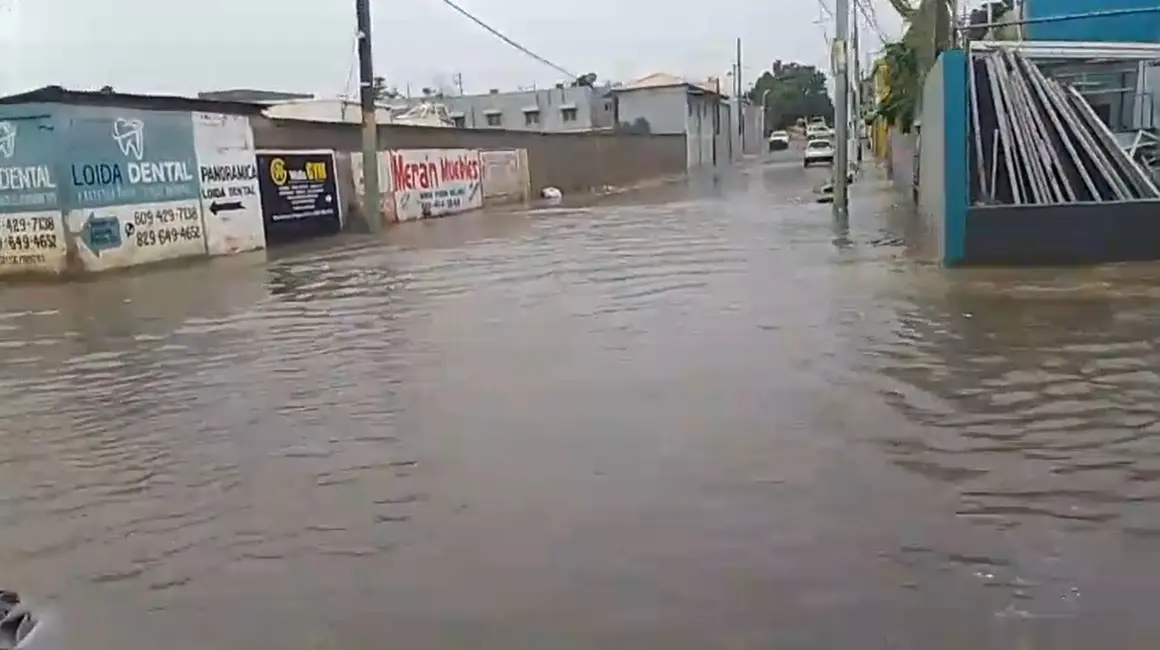Authorities in Nassau, Bahamas, are actively investigating a shooting incident that occurred on the evening of Friday, September 26, 2025, near Fox Hill Road. The event left an adult male injured, necessitating immediate hospitalization. Initial reports indicate that the victim was seated on the porch of a residence located on Blueberry Hill when an unidentified individual, clad in a dark-colored hoodie, approached him. The assailant reportedly brandished a firearm and fired at the victim before hastily fleeing the scene. The victim sustained a gunshot wound to his right thigh and was promptly transported to a medical facility for urgent care. As of now, his condition remains undisclosed. Law enforcement officials are continuing their investigation into the matter, urging anyone with relevant information to come forward.
分类: society
-

Government expands 911 system coverage with start of operations in Pedernales
The province of Pedernales in the Dominican Republic has officially launched the National 911 Emergency and Security Response System, marking a significant milestone in public safety and emergency preparedness. Spearheaded by José Ignacio Paliza, Minister of the Presidency, the initiative aims to provide swift medical assistance, ensure citizen safety, and deliver effective emergency responses across the region. Paliza highlighted the system’s role in uniting over 30 government institutions under a shared mission: saving lives. Over the past five years, the 911 System has expanded its reach nationwide, and its establishment in Pedernales reflects both the area’s growing tourism industry and the resilience of its residents. Randolfo Rijo Gómez, executive director of the 911 System, emphasized that this expansion now covers 26 provinces, serving 93% of the population—approximately 9.4 million citizens. Pedernales now boasts a comprehensive emergency response infrastructure, including ambulances, fire trucks, and highly trained personnel available 24/7. This development not only ensures peace of mind for families but also bolsters community confidence and supports the province’s broader development. The 911 System integrates key institutions such as the Directorate of Out-of-Hospital Emergency Services, the National Police, and fire departments, ensuring coordinated responses for both residents and the burgeoning tourism sector. Governor Edirda De Óleo expressed gratitude to President Luis Abinader for his commitment to the province, while Juan Manuel Méndez García, director of the Emergency Operations Center, underscored the readiness of the new facility and its fully equipped ambulances, staffed by local personnel dedicated to preserving lives.
-

Heavy rains leave 602,666 users without drinking water.
Torrential downpours swept across much of the national territory yesterday, leaving a trail of destruction in their wake. According to the latest report from the Emergency Operations Center (COE), 511 homes were damaged, 2,555 people were displaced, and 26 individuals sought shelter. The severe weather also isolated 11 communities, damaged three roads, and caused equal harm to bridges. Additionally, 32 aqueducts were impacted, with 31 completely out of service, affecting approximately 602,666 users. The Dominican Institute of Meteorology (Indomet) predicts that the rains will persist throughout the weekend, particularly in the southeast, northeast, southwest, and northwest regions, driven by an active tropical wave. These conditions will be accompanied by thunderstorms and gusty winds, especially along the Caribbean coast. Temperatures are expected to remain slightly warm, ranging from 21°C to 28°C. The COE has issued alerts for 30 provinces, warning of potential flooding in rivers, streams, and urban areas. Red alerts are in place for Azua, San José de Ocoa, San Cristóbal, Santo Domingo, and the National District, while yellow alerts cover several other regions. Green alerts have been issued for Independencia, Elías Piña, Montecristi, and others. Meanwhile, Hurricane Humberto, located 690 km northeast of the Leeward Islands, has intensified but poses no threat to the Dominican Republic. The Ministry of Public Works and Communications (MOPC) reported significant damage to road infrastructure due to overflowing rivers and urban flooding. In La Altagracia, streets were inundated, and 26 homes were flooded in Verón-Punta Cana. A fallen tree on the Higüey-Anamuyita highway disrupted traffic, though it was later cleared. In San Pedro de Macorís, urban flooding affected several neighborhoods, and the Soco River’s overflow isolated multiple communities. Tragically, a bridge collapse in Monte Plata resulted in one fatality. Landslides and road blockages were reported in Los Cacaos de San Cristóbal, while 160 homes were flooded in Azua, displacing 774 people. In San José de Ocoa, trucks carrying vegetables were stranded due to a landslide, and flooding in Pedernales, Jimaní, and La Descubierta damaged crops. Santiago also experienced widespread flooding in various neighborhoods.
-

How long will the rains continue and what measures will be taken to avoid unfortunate situations?
The Dominican Republic is currently experiencing intense rainfall, driven by an active tropical wave and a low-lying trough, with forecasts predicting the downpour to persist until Saturday. Gloria Ceballos, director of the Dominican Institute of Meteorology (Indomet), provided updates on the situation, noting that preliminary reports indicate rainfall exceeding 200 millimeters (mm) in the southwest region within a 24-hour period. Additionally, provinces such as Enriquillo, Barahona, and Azua have recorded 146 mm of precipitation. Ceballos emphasized that data collection on rainfall accumulation from inland areas is ongoing. In response to the adverse weather conditions, the Emergency Operations Center (COE) has issued a series of safety guidelines for the public. These include seeking shelter in secure locations, properly disposing of trash to prevent blockages, securing loose items on balconies and windows, avoiding flooded streets, refraining from touching electrical poles or cables, driving cautiously with lights on, and steering clear of rivers and streams with high water volumes. The COE urges residents to adhere to these measures to mitigate risks during the rainy season.
-

The damage caused by the rains in the Dominican Republic
The Dominican Republic is facing significant challenges as heavy rains, driven by an active tropical wave and a trough, have caused widespread flooding and displacement across several regions. According to the Emergency Operations Center (COE), 1,781 people have been forced to evacuate their homes. The municipal district of El Rosario in Azua province is among the hardest-hit areas, with the Tábara River overflowing and flooding approximately 160 houses, displacing 774 residents. The Civil Defense has established a shelter at the Liceo Gregorio Luperón, currently housing 26 individuals from nine families. La Altagracia has also reported 26 flooded residences, with urban flooding severely affecting areas like Veron, Bavaro, Cortesito, and Sabana de Los Martinez. In San Pedro de Macorís, malfunctioning drainage systems have led to flooding in multiple sectors, including Placer Bonito and Barrio Mexico. Additionally, the Soco River’s overflow has partially isolated several communities. Santiago has seen flooding in numerous sectors, with 150 houses partially submerged. The National Institute of Drinking Water and Sewerage (Inapa) reported that 10 aqueducts are out of service, leaving 179,256 users without water. The Ministry of Public Works and Communications (MOPC) has also noted damage to road infrastructures due to overflowing rivers and urban flooding. The COE has issued safety guidelines for residents, advising against crossing flooded areas, disposing of garbage properly, and driving cautiously during the ongoing crisis.
-

Missing evidence found in Chacadan Daniel case, police chief says
In a significant development in the long-standing investigation into the death of 22-year-old Chacadan Daniel, Police Commissioner Verne Garde announced on Thursday that crucial evidence once believed to be missing has been recovered. The discovery was made following a renewed search of the exhibit room at the Micoud Police Station, where the case originated. Garde revealed that the investigation had been reassigned to a more senior officer after the primary investigator went on vacation, leading to the recovery of the evidence. The issue of the missing evidence dates back to 2018 and 2019, with a formal investigation launched in May 2023. Garde emphasized the importance of accountability, stating that non-intimate DNA samples from officers who worked at the station during the relevant period would be cross-referenced with the recovered evidence to ensure transparency. The case, which dates back to 2013, has been a source of immense pain for Daniel’s family, who have criticized the lack of due process and transparency in the investigation. They have called for sweeping reforms, including stricter evidence handling procedures and the establishment of an independent body to address complaints against police officers. The family expressed gratitude for Garde’s disclosure but stressed that Daniel’s death is a national issue highlighting systemic failures in accountability and human rights.
-

Who is responsible for building resilience?
In the Caribbean, resilience is not merely a policy buzzword but a critical survival strategy. The region faces a myriad of challenges, from devastating hurricanes and rising sea levels to biodiversity loss and economic shocks. These issues underscore the urgent need for a comprehensive approach to resilience-building, one that involves the entire society rather than relying solely on governmental action. While governments play a pivotal role in setting strategic priorities, mobilizing resources, and engaging with international partners, resilience cannot be achieved through top-down measures alone. It requires the active participation of communities, the private sector, youth, academia, and every individual citizen. Communities, often the first responders, are at the forefront of resilience efforts. Whether it’s fisherfolk adapting to changing marine ecosystems or youth groups organizing disaster preparedness workshops, local action is both immediate and impactful. Yet, these grassroots initiatives often remain underfunded and underrepresented in national decision-making. The private sector also has a crucial role to play, as climate risks directly threaten business operations. Investing in resilient infrastructure, renewable energy, and innovative sectors like the Circular Economy and Blue Economy is essential. Meanwhile, young people are demanding climate justice and inclusive governance, pushing for their voices to be heard in shaping the future. Universities and research institutions must continue to provide evidence-based insights to inform resilience strategies. Regional and international development partners should offer support without overshadowing local leadership. Ultimately, resilience is about more than recovery; it’s about transforming systems to anticipate, absorb, and adapt to shocks while thriving. This collective effort is vital to securing a sustainable and prosperous future for the Caribbean.
-

World Contraception Day: 26 September
The ongoing debate surrounding the Age of Civil Responsibility (ACR) Bill has brought to light critical issues concerning adolescent sexual health in the Caribbean. Recent findings reveal that only 5% of parents engage in conversations with their children about puberty and responsible sexual behavior. Alarmingly, some parents fail to cooperate with legal authorities in cases involving sexual predators, and in extreme instances, even exploit their children for financial gain. The Caribbean region holds the dubious distinction of having the second-highest adolescent fertility rate globally, the second-earliest sexual debut, and three countries ranking among the top ten for gender-based violence. While the ACR Bill alone cannot resolve these deep-seated issues, it serves as a catalyst for broader initiatives. These include promoting abstinence, overcoming parental reluctance to discuss sex, enhancing sexuality education in schools and churches, and improving access to contraceptives and counseling for sexually active individuals of all ages. Studies indicate that 99% of women visiting public health clinics are aware of at least one contraceptive method. However, 80% report that their most recent or current pregnancy was unplanned. The primary reasons for not using contraceptives include fear of side effects (55%), partner objection (22%), and cost (8%). Addressing these challenges requires dispelling myths about modern contraceptives, combating patriarchal attitudes, and implementing policies that eliminate legal and economic barriers to contraceptive access. World Contraception Day serves as a poignant reminder of these ongoing struggles. Sincerely, Tonia Frame, President, Grenada Planned Parenthood Association (GPPA) and Fred Nunes, Consultant, Advocates for Safe Parenthood: Improving Reproductive Equity (ASPIRE). NOW Grenada is not responsible for the opinions, statements, or media content presented by contributors. In case of abuse, click here to report.


